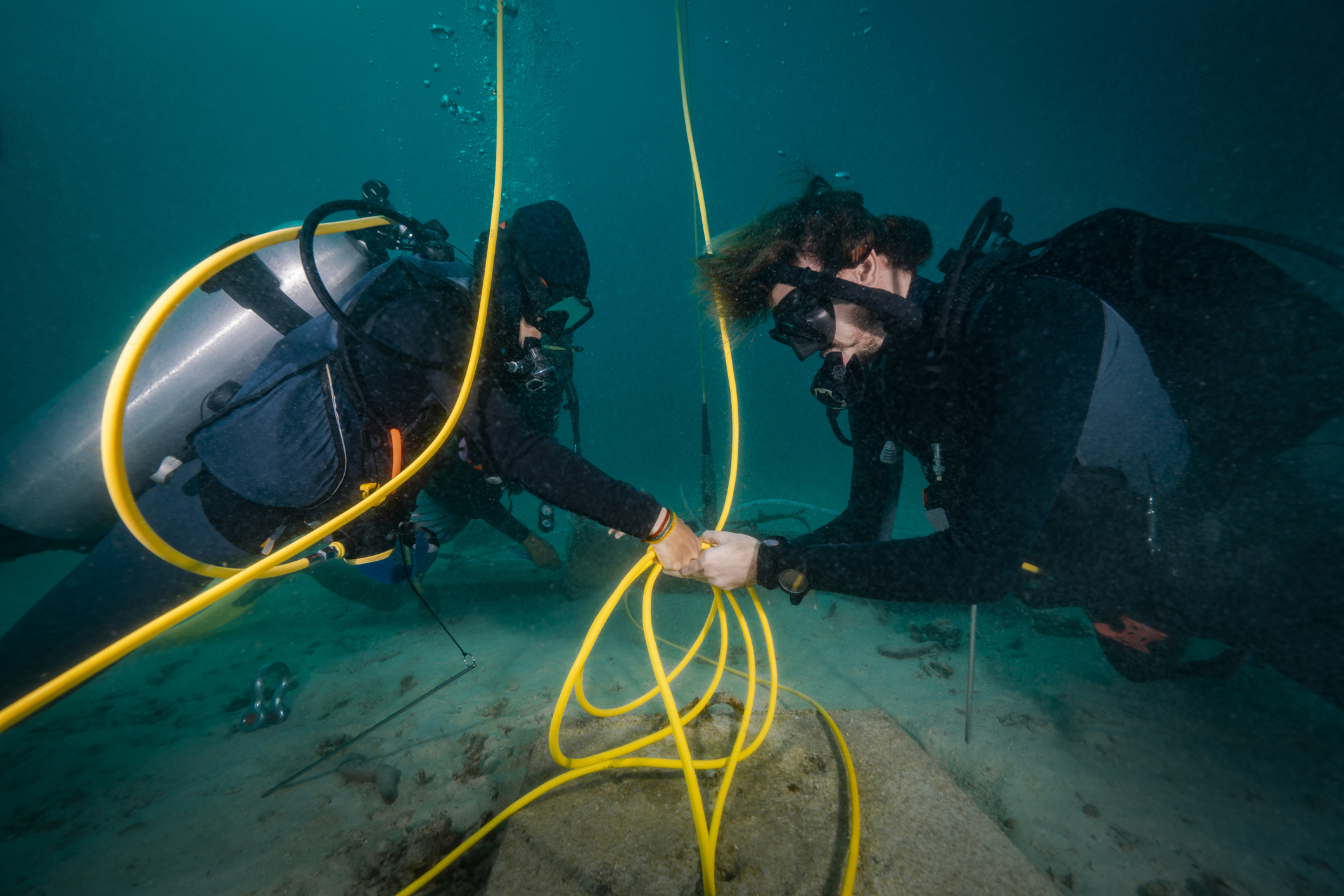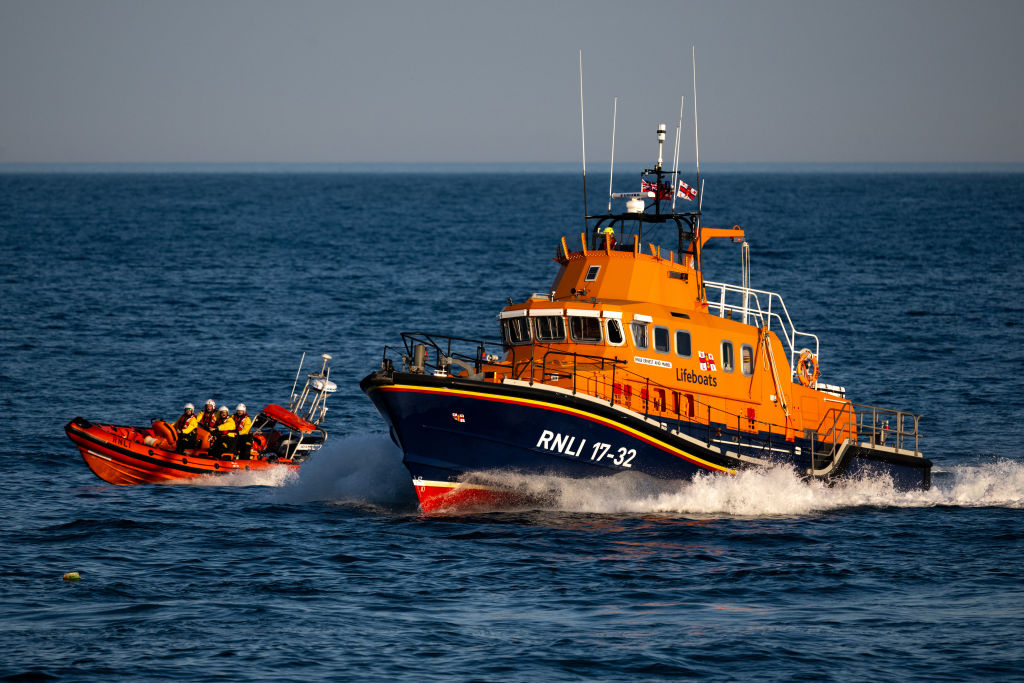Why undersea cables are under threat – and how to protect them
Undersea cables power the internet and are vital to modern economies. They are now vulnerable

What undersea cables are we talking about?
There are two broad types of undersea (“submarine”) cables that form an increasingly vital part of the world’s global infrastructure. These are communications cables, which transmit data between continents, and power transmission cables, which carry ultra-high-voltage electricity. Taking the communications cables first: according to the research firm TeleGeography, there are 532 cable systems in service worldwide (as of September this year), with another 77 planned (these figures relate to publicly known communications systems, not power cables). These fibre-optic cables – which stretch for a million miles – are the backbone of the internet and international communications, including email, web pages and video calls. There is a common misapprehension that most global communication today is accomplished via satellites. In reality, more than 95% of all the data that moves around the world goes through these undersea cables, and they facilitate an estimated $10 trillion worth of financial transactions every day.
What about the undersea power cables?
Undersea telegraphy cables date from the mid-19th century. Power cables – carrying high-voltage direct current across oceans – are much younger, dating from 1954. The renewables revolution and technological advances mean that undersea power cables are a fast-growing area. To transport coal, oil or natural gas you need a ship or a pipeline. But in a world that produces electricity mostly from renewable sources, the market for transmission by long-distance cables is exploding. The first 660km of cable to transport electricity produced by wind power was not installed until 2009. That grew to just 750km by 2017, but jumped to 5,000km by the end of 2023 – and is projected (by consultancy 4C Offshore) to be 23,000km by 2030 and 56,000km by 2035 (for wind only). That’s still a relatively small network compared with communications cables, but it’s fast-growing, critical to the world’s changing infrastructure needs and is exposed to the same vulnerabilities.
What are undersea cables vulnerable to?
Undersea cables are built from sturdy materials, designed to withstand harsh ocean conditions and accidental impacts, and have a lifespan of about 25 years. In deep-water locations, the cables often have a black outer polyethylene layer, a wrap of metal tape, another polyethylene layer, a copper sleeve to conduct electricity and a tangle of stainless steel wires to provide strength. “Only then comes a small metal tube holding the fibre-optic lines, which are often coated with glycerine jelly as a last protection against the water,” says The New York Times. All this makes for a “remarkably sturdy” conduit, but not an inviolable one. Life on the sea bed is, by its nature, difficult – the cables are at the mercy of intense pressure, natural weather phenomena and (in shallower waters) disturbance by sea life.
MoneyWeek
Subscribe to MoneyWeek today and get your first six magazine issues absolutely FREE

Sign up to Money Morning
Don't miss the latest investment and personal finances news, market analysis, plus money-saving tips with our free twice-daily newsletter
Don't miss the latest investment and personal finances news, market analysis, plus money-saving tips with our free twice-daily newsletter
What about accidents?
The most significant vulnerability is accidental damage or sabotage. Each year, an estimated 100 to 150 undersea cables are cut, in presumed accidents caused by fishing equipment or anchors. Repairs are slow and difficult and involve retrieving sections of cable before relaying them. Some of these accidents have limited impacts, but some can be devastating. And in a growing number of incidents, the suspected cause is deliberate sabotage. In March this year, multiple unexplained failures in cables off the coast of West Africa led to massive internet disruption in 10 nations. Last year, several failures in the Baltic Sea raised strong suspicions of sabotage by Russia and China. In recent weeks, there have been more incidents.
In late November, two fibre-optic cables connecting Germany and Finland, as well as Sweden and Lithuania, were severed within 24 hours. Authorities believe the ship responsible was a Russian-captained, Chinese vessel that is known to have passed close to the spot where the two cables intersect at around the time they were cut. Also in November, a Russian spy ship called the Yantar (officially an oceanographic research vessel) was escorted out of the Irish Sea by an Irish naval vessel. The Russian ship was first observed accompanying a Russian warship, the Admiral Golovko, through the English Channel.
Why was it of concern?
Because it entered and patrolled in waters that contain critical energy pipelines and submarine communication cables – raising alarm over the security of the critical interconnector cables that run between Ireland and Britain. These cables carry global internet traffic from huge data centres operated by tech companies with their European HQs sited in Ireland, including Google and Microsoft. It’s hard to secure definitive evidence that a particular ship has damaged a cable intentionally. That makes false alarms, and false attributions, possible – even likely. But it also makes cables an ideal target of the “hybrid warfare” favoured by Russia in recent years, including attacks on critical infrastructure.
What can affected countries do to protect undersea cables?
In September, a number of Western nations (including the UK and US) agreed at a UN summit to adopt a common approach to protecting the security and resilience of undersea cables. China complained that this was really a device to exclude it from an area of growing economic and strategic importance. Increasingly, though, we are likely to see nations taking matters into their own hands. Following the latest incidents, the Polish PM Donald Tusk urged Nordic and Baltic states to start joint patrols of their waters. “Our European security is not only under threat from Russia’s war of aggression against Ukraine but also from hybrid warfare by malicious actors,” said the foreign ministers of Germany and Finland in a joint statement “Safeguarding shared critical infrastructure is vital to our security and the resilience of our societies.”
This article was first published in MoneyWeek's magazine. Enjoy exclusive early access to news, opinion and analysis from our team of financial experts with a MoneyWeek subscription.
Get the latest financial news, insights and expert analysis from our award-winning MoneyWeek team, to help you understand what really matters when it comes to your finances.
Simon Wilson’s first career was in book publishing, as an economics editor at Routledge, and as a publisher of non-fiction at Random House, specialising in popular business and management books. While there, he published Customers.com, a bestselling classic of the early days of e-commerce, and The Money or Your Life: Reuniting Work and Joy, an inspirational book that helped inspire its publisher towards a post-corporate, portfolio life.
Since 2001, he has been a writer for MoneyWeek, a financial copywriter, and a long-time contributing editor at The Week. Simon also works as an actor and corporate trainer; current and past clients include investment banks, the Bank of England, the UK government, several Magic Circle law firms and all of the Big Four accountancy firms. He has a degree in languages (German and Spanish) and social and political sciences from the University of Cambridge.
-
 Household savings ratio drops – are you setting enough aside for 2026?
Household savings ratio drops – are you setting enough aside for 2026?High inflation has pushed the savings ratio down again and the figure could dip further next year
-
 US stocks: opt for resilience, growth and value
US stocks: opt for resilience, growth and valueOpinion Julian Wheeler, partner and US equity specialist, Shard Capital, highlights three US stocks where he would put his money
-
 Stock markets have a mountain to climb: opt for resilience, growth and value
Stock markets have a mountain to climb: opt for resilience, growth and valueOpinion Julian Wheeler, partner and US equity specialist, Shard Capital, highlights three US stocks where he would put his money
-
 The steady rise of stablecoins
The steady rise of stablecoinsInnovations in cryptocurrency have created stablecoins, a new form of money. Trump is an enthusiastic supporter, but its benefits are not yet clear
-
 SRT Marine Systems: A leader in marine technology
SRT Marine Systems: A leader in marine technologySRT Marine Systems is thriving and has a bulging order book, says Dr Michael Tubbs
-
 Goodwin: A superlative British manufacturer to buy now
Goodwin: A superlative British manufacturer to buy nowVeteran engineering group Goodwin has created a new profit engine. But following its tremendous run, can investors still afford the shares?
-
 A change in leadership: Is US stock market exceptionalism over?
A change in leadership: Is US stock market exceptionalism over?US stocks trailed the rest of the world in 2025. Is this a sign that a long-overdue shift is underway?
-
 A reckoning is coming for unnecessary investment trusts
A reckoning is coming for unnecessary investment trustsInvestment trusts that don’t use their structural advantages will find it increasingly hard to survive, says Rupert Hargreaves
-
 Modern Monetary Theory and the return of magical thinking
Modern Monetary Theory and the return of magical thinkingThe Modern Monetary Theory is back in fashion again. How worried should we be?
-
 Metals and AI power emerging markets
Metals and AI power emerging marketsThis year’s big emerging market winners have tended to offer exposure to one of 2025’s two winning trends – AI-focused tech and the global metals rally